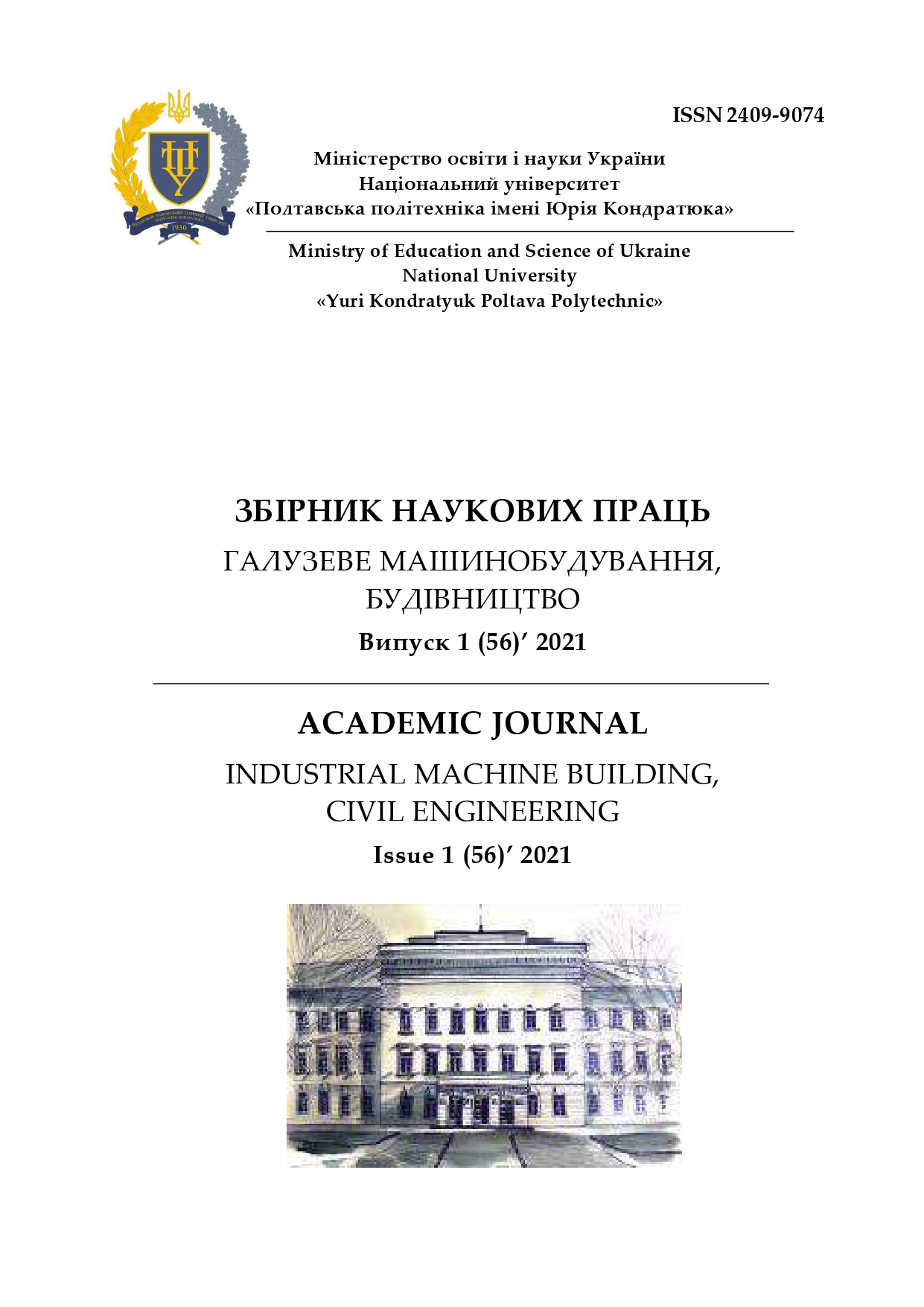Load Calculation of the Load-carrying Structure of a Tank Car in Oper-ating Modes
DOI:
https://doi.org/10.26906/znp.2021.56.2517Keywords:
transport mechanics, tank car, load-carrying structure, dynamic load, strength, fatigue strength coefficientAbstract
The article determines dynamic load and strength of the load-carrying structure of a tank car with elastic-friction connections in the boiler bearings and between boiler bearings and the boiler bearer. It was established that the use of elastic-friction connections allows to reduce the dynamic load on the tank car by almost 36% in comparison with the prototype. The results of stress calculation showed that the maximum equivalent stresses in the load-carrying structure of a tank car occur in the interaction area of the center sill with the draw-bar and do not exceed the allowable values. The conducted research will allow to increase the operational efficiency of tank cars by reduction of operating costs, and will also promote the creation of their innovative designs.
References
Atamanchuk N.A., Tsyganskaya L.V. (2013). Directions for improving the design of tank cars for the transportation of petroleum products. Transport of the Russian Federation, 3(46), 14-17
Soberzhansky A.N., Tsyganskaya L.V. (2010). Improving the design of tank cars. Bulletin of Dnipro National University of Railway Transport named after Academician V. Lazaryan, 35, 25-28
Putyato A.V. (2009). Computer simulation of the hydrodynamic loading of the manhole area of a tank car. Bulletin of the Sukhoi State Technical University of Gomel, 1, 79-86
Kelrich M.B., Fomin O.V., Prokopenko P.M., Sova S.S. (2020). Theoretical aspects of determining the residual resource of a tank car for dangerous goods. Bulletin of the Volodymyr Dahl East Ukrainian National University, 5(261), 5-9
https://doi.org/10.33216/1998-7927-2020-261-5-5-9 DOI: https://doi.org/10.33216/1998-7927-2020-261-5-5-9
Ashtiani I.H., Rakheja S., Ahmed W. (2019). Investigation of coupled dynamics of a railway tank car and liquid cargo subject to a switch-passing maneuver. Proceedings of the Institution of Mechanical Engineers, Part F: Journal of Rail and Rapid Transit, 233(10), 1023-1037
https://doi.org/10.1177/0954409718823650 DOI: https://doi.org/10.1177/0954409718823650
Shi H., Wang L., Nicolsen B., Shabana A.A. (2017). Integration of geometry and analysis for the study of liquid sloshing in railroad vehicle dynamics. Proceedings of the Institution of Mechanical Engineers, Part K: Journal of Multi-Body Dynamics, 231(4), 608-629
https://doi.org/10.1177/1464419317696418 DOI: https://doi.org/10.1177/1464419317696418
Fomin O., Lovska A., Kulbovskyi I, Holub H., Kozarchuk I., Kharuta V. (2019). Determining the dynamic loading on a semi-wagon when fixing it with a viscous coupling to a ferry deck. Eastern-European Journal of Enterprise Technologies, 2/7(98), 6-12
https://doi.org/10.15587/1729-4061.2019.160456 DOI: https://doi.org/10.15587/1729-4061.2019.160456
Fomin O.V., Lovska A.A. (2021). Determination of vertical accelerations of the load-bearing structure of a platform car with viscous connections in longitudinal beams. Scientific notes of the V.I. Vernadsky Tauriia National University. Technical Sciences, 32(71)1, 135-140 DOI: https://doi.org/10.32838/2663-5941/2021.1-2/22
Dyomin Yu.V., Chernyak G.Yu. (2003). Fundamentals of car dynamics. Kyiv: QUETT
Fomin O., Lovska A., Píštěk V., Kučera P. (2019). Dynamic load effect on the transportation safety of tank containers as part of combined trains on railway ferries. Vibroengineering Procedia, 29, 124-129
https://doi.org/10.21595/vp.2019.21138 DOI: https://doi.org/10.21595/vp.2019.21138
Fomin O., Kulbovskiy I., Sorochinska E., Sapro-nova S., Bambura O. (2017). Experimental confirmation of the theory of implementation of the coupled design of center girder of the hopper wagons for iron ore pellets. Eastern-European Journal of Enterprise Technologies, 5, 11-19
https://doi:10.15587/1729-4061.2017.109588 DOI: https://doi.org/10.15587/1729-4061.2017.109588
Kondratiev A., Gaidachuk V., Nabokina T., Tsaritsynskyi A. (2020). New possibilities in creating of effective composite size-stable honeycomb structures designed for space purposes. Advances in Intelligent Systems and Computing, 1113, 45-59
https://doi.org/10.1007/978-3-030-37618-5_5 DOI: https://doi.org/10.1007/978-3-030-37618-5_5
DSTU 7598:2014. (2015). Freight Wagons. General reguirements to calculation and designing of the new and modernized 1520 mm gauge wagons. Kyiv
GOST 33211-2014. (2016). Freight wagons. Requirements to structural strength and dynamic qualities. Moskov
Lovska A.A. (2015). Peculiarities of computer modeling of strength of body bearing construction of gondola car during transportation by ferry-bridge. Metallurgical and Mining Industry, 1, 49-54
Lovska A., Fomin O. (2020). A new fastener to ensure the reliability of a passenger coach car body on a railway ferry. Acta Polytechnica, 60(6), 478-485 DOI: https://doi.org/10.14311/AP.2020.60.0478
Kelrykh M., Fomin O. (2014). Perspective directions of planning carrying systems of gondolas. Metallurgical and Mining Industry, 6, 64-67
Lovska A. (2018). Simulation of loads on the carrying structure of an articulated flat car in combined transportation. International Journal of Engineering & Technology, 7(4.3), 140-146
https://doi.org/10.14419/ijet.v7i4.3.19724 DOI: https://doi.org/10.14419/ijet.v7i4.3.19724
Vatulia G.L., Lobiak O.V., Deryzemlia S.V., Verevicheva M.A., Orel Ye.F. (2019). Rationalization of cross-sections of the composite reinforced concrete span structure of bridges with a monolithic reinforced concrete roadway slab. IOP Conference Series: Materials Science and Engineering, 664, 012014
https://doi:10.1088/1757-899X/664/1/012014 DOI: https://doi.org/10.1088/1757-899X/664/1/012014
Ustich P.A., Karpych V.A., Ovechnikov M.N. (1999). Reliability of rail non-traction rolling stock. Moscow
Senko V.I., Makeev S.V., Komissarov V.V., Skorokhodov S.A. (2018). Features of determining the fatigue resistance factor of rolling stock structures. Bulletin of the Belarusian State University of Transport: Science and Transport, 1(36), 5-9
Downloads
Published
How to Cite
Issue
Section
Published 2021-09-30




